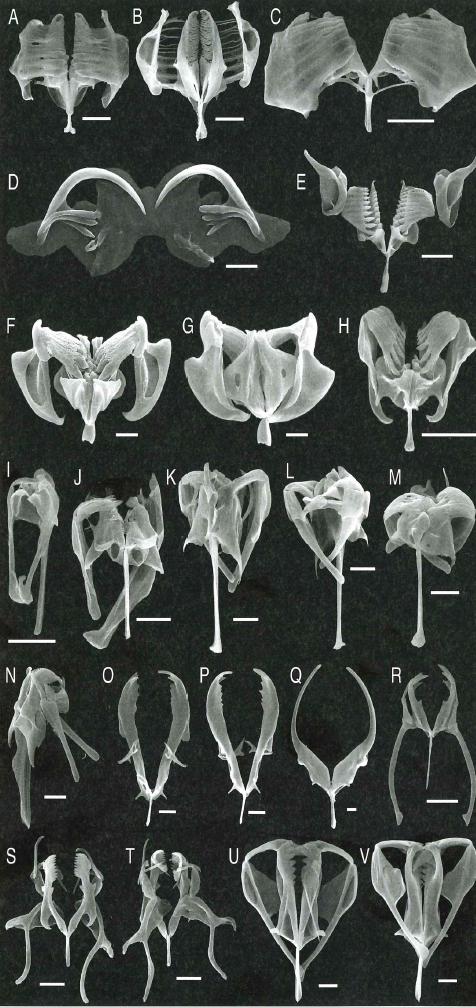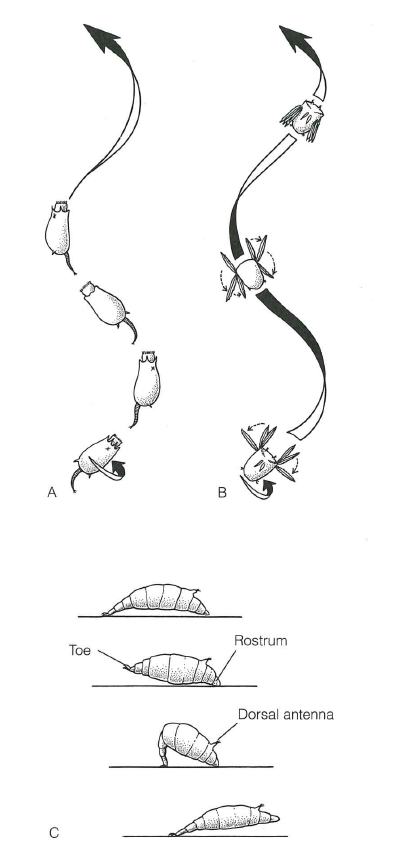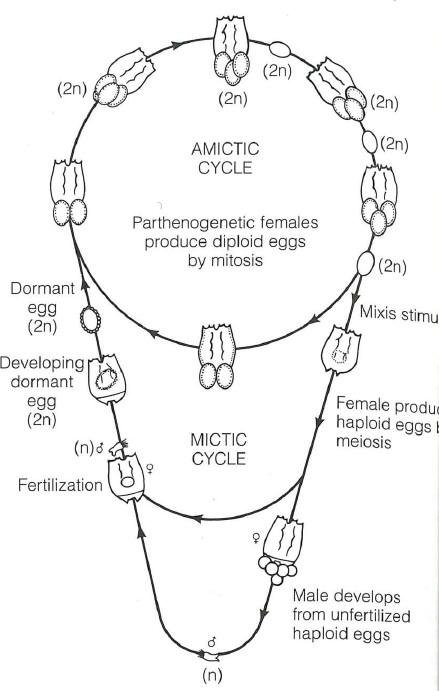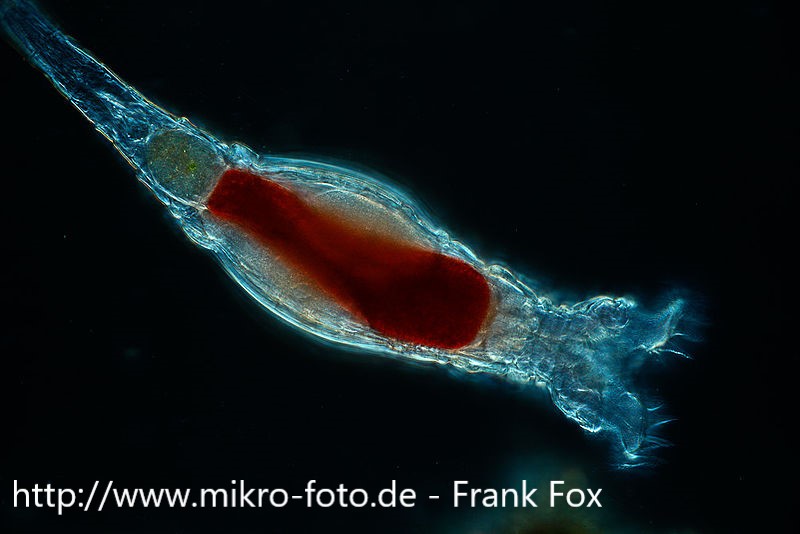Rotifers, or “wheel animalcules”, are an interesting group of microscopic animals (size between 0.1 and 1mm in length) commonly found both in fresh water and terrestrial habitats; although less number of species have been described, marine rotifer species exist too.
In regards with their classification, rotifers belong to a bigger group called “Syndermata” (i.e. animals characterized by a syncytial epidermis that contains within its cytoplasm a skeleton known as the intrasyncytial lamina), and can be divided into around three to six groups depending on the author you read.
Most rotifers are solitary, but colonial species exist too. The body of these animals is usually transparent, but in some cases you can find colorful ones depending on the gut content. The reproduction is usually parthenogenetic, and males are rare or apparently even absent.
One important defining characteristic of rotifers is the ciliary corona or rotatory organ, a structure devoted to the movement and feeding of the animal. In many instances, while looking a freshly collected sample, the easiest way to distinguish the different organisms present in such a sample is to observe how the animals move (specially when working with very tiny and transparent individuals). Luckily, the way in which rotifers move is very characteristic (figure below).


Among other curiosities, the species of some of these animals have between one and four foot projections called toes. The foot is used as an attachment organs, a function that is possible thanks to the secretions of the so called “pedal glands”.
Rotifers exhibit interesting plasticity changes. Indeed, depending on the seasonal variations in temperature, predator abundance, salinity, etc. many pelagic species undergo seasonal changes that involve the development of spines of different shapes and lengths. This process of change is called cyclomorphosis.
The reproduction of these tiny animals can vary among groups, but parthenogenesis is what we can call “the signature way of development” of this clade. In the case of bdelloids though, there is an apparent total absence of males, so reproduction is exclusively parthenogenetic.
In contrast with bdelloids, the group with the most simple life cycle (a cycle without sexual reproduction that only involve one type of female that produce only one single type of egg, all individuals are clonal), the reproduction patterns of other groups can be quite complex while involving a number of intertwinedlife cycles. An example of this can be seen in the life cycle of a monotony rotifer from the species Brachionus leydigi depicted in the graph below.

As biologist, one of the things that amaze me the most of the field is development indeed. It would be, therefore, difficult finishing this post without commenting that the development of these creatures is spiral and, perhaps more strikingly, that the post embryonic grow is the result of the increase of the cell size or spacing among these cells without addition of new ones.
Hoping that you have learned a little bit more about these fascinating animals. With best wishes.
Alberto
PS. The images of this post were from Ruppert, Edward E., Richard S. Fox, and Robert D. Barnes. “Invertebrate zoology: a functional evolutionary approach” (2004); and Schmidt-Rhaesa, Andreas, ed. “Gastrotricha, Cycloneuralia, and Gnathifera” (2013). If you are interested in this animal group, more plates and information can be found, among others, in that sources.
![]()
